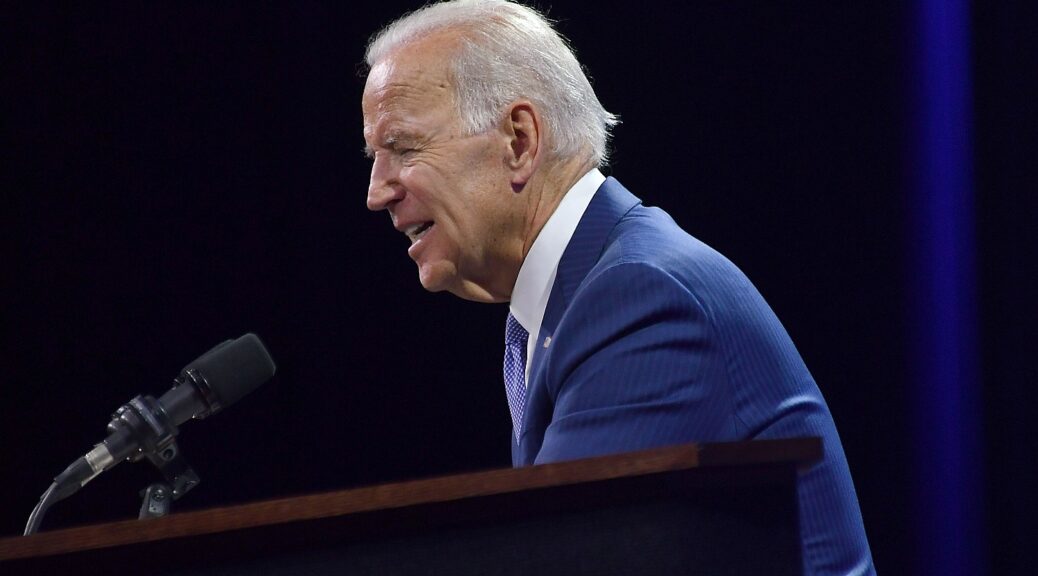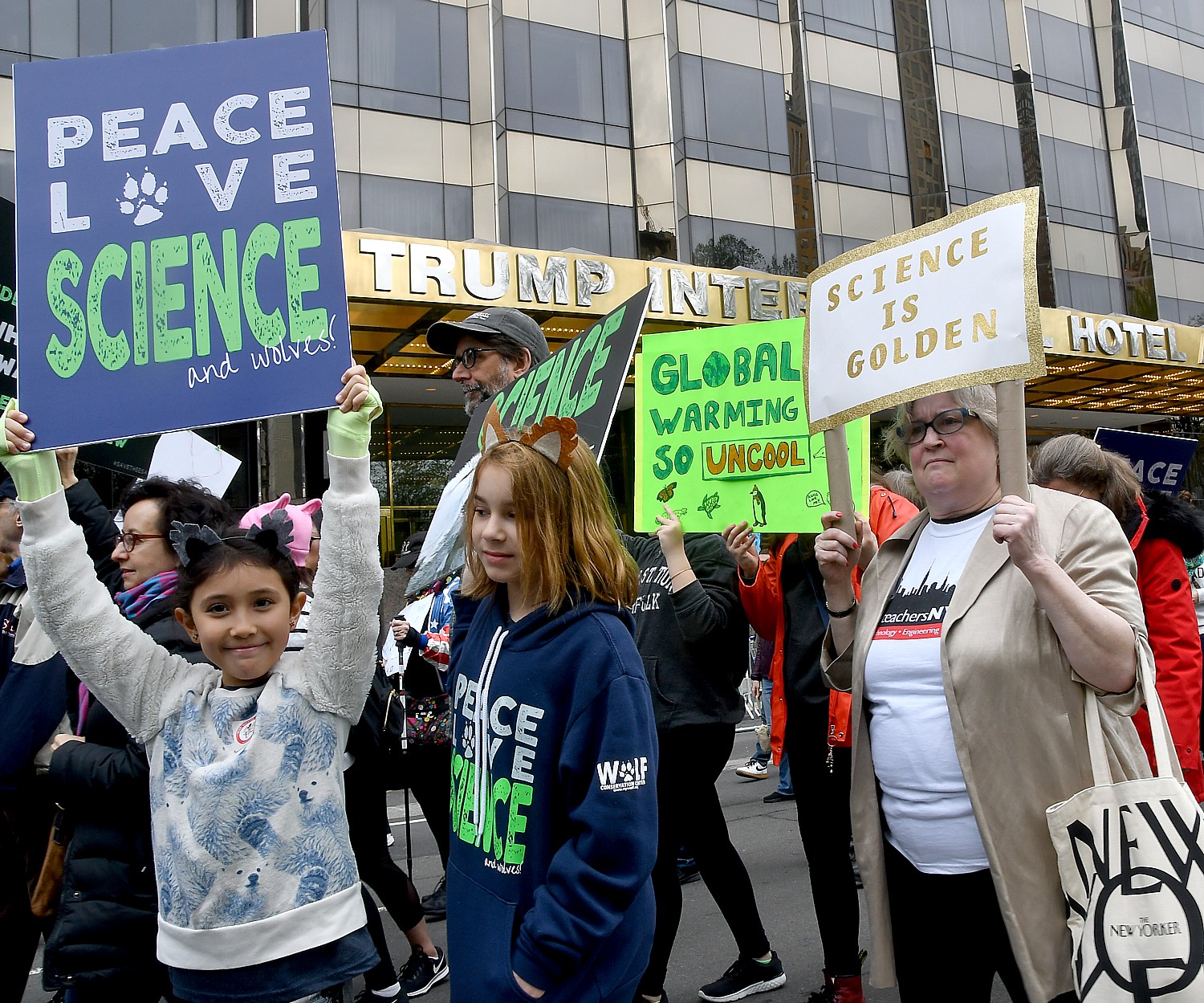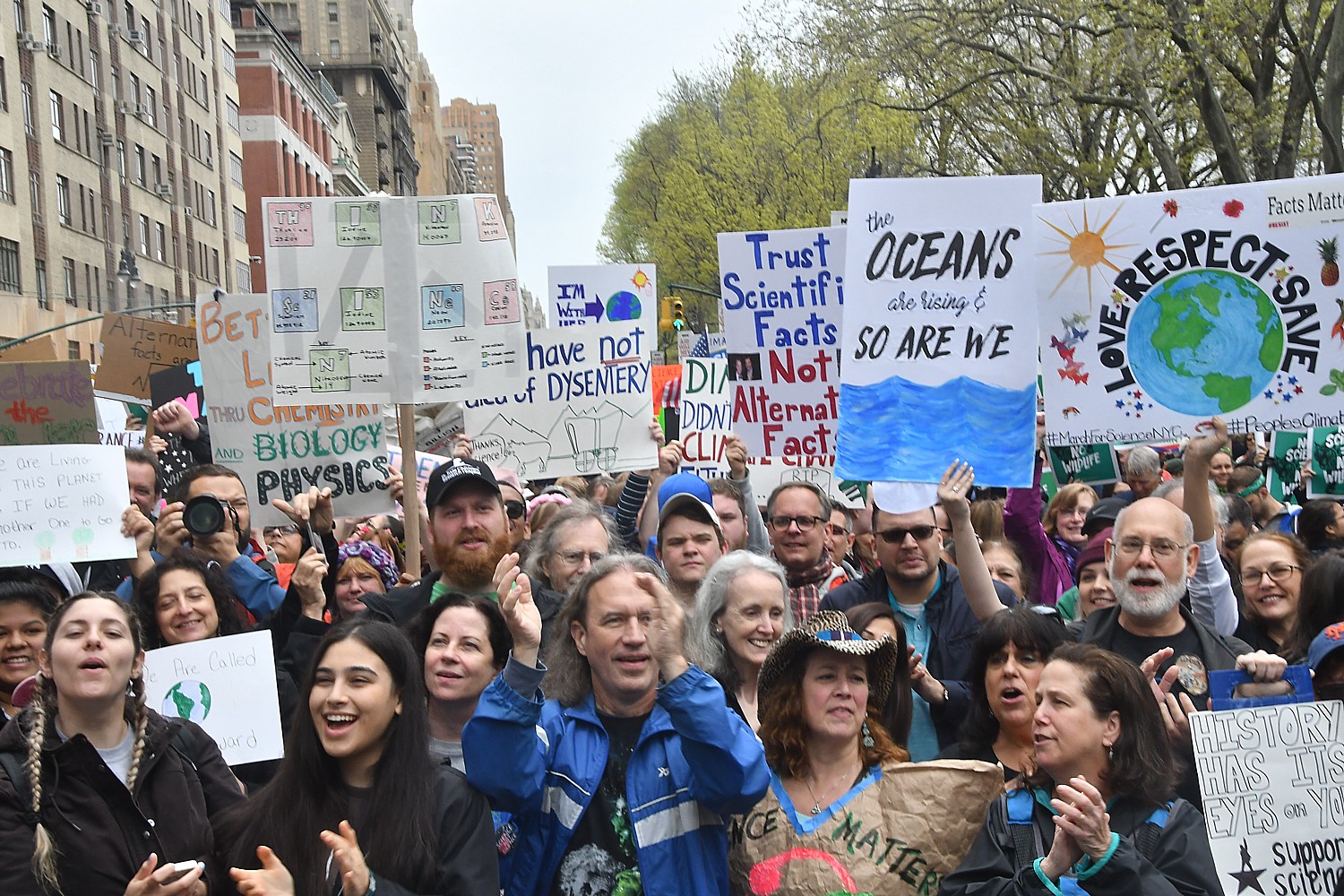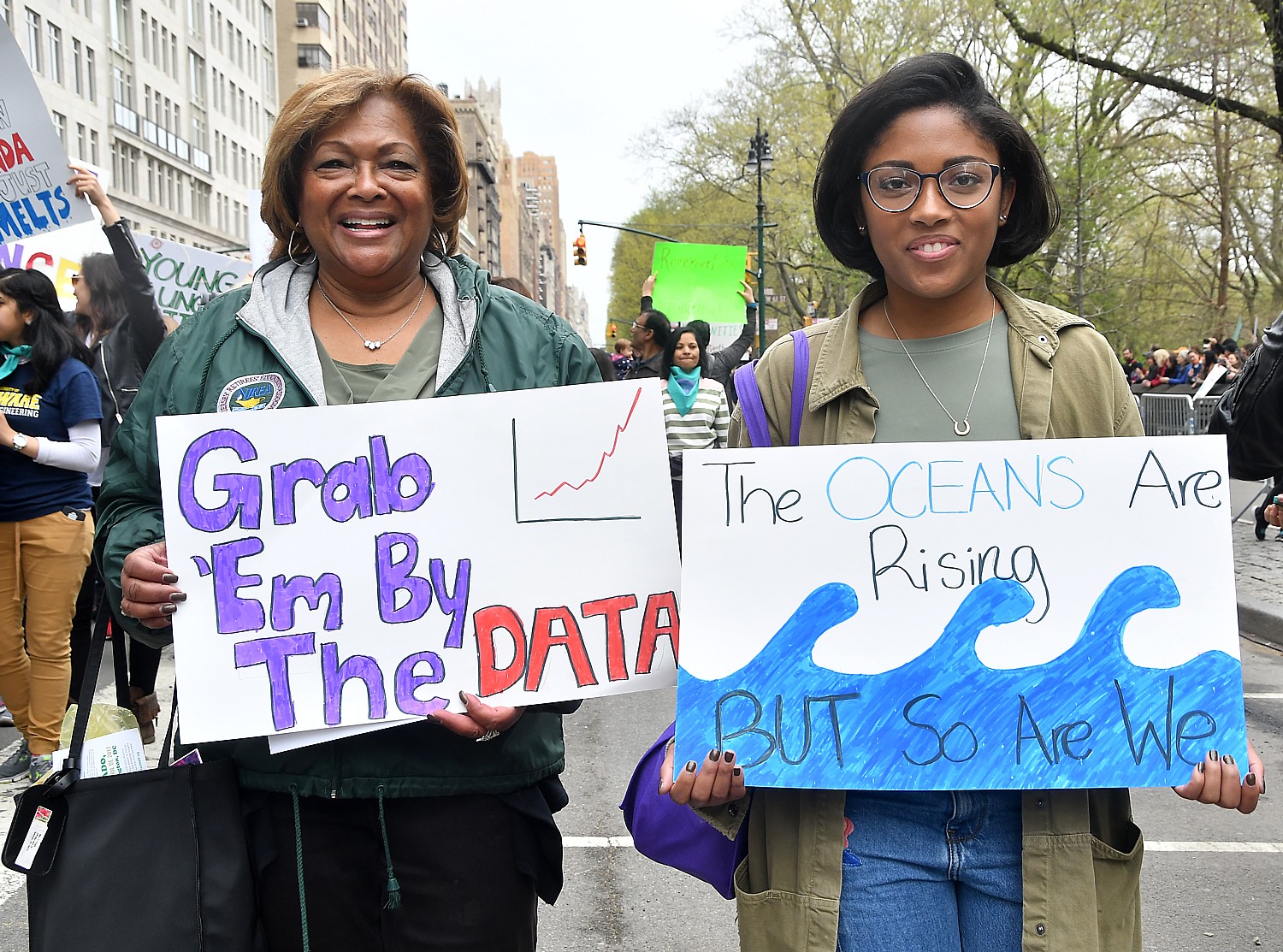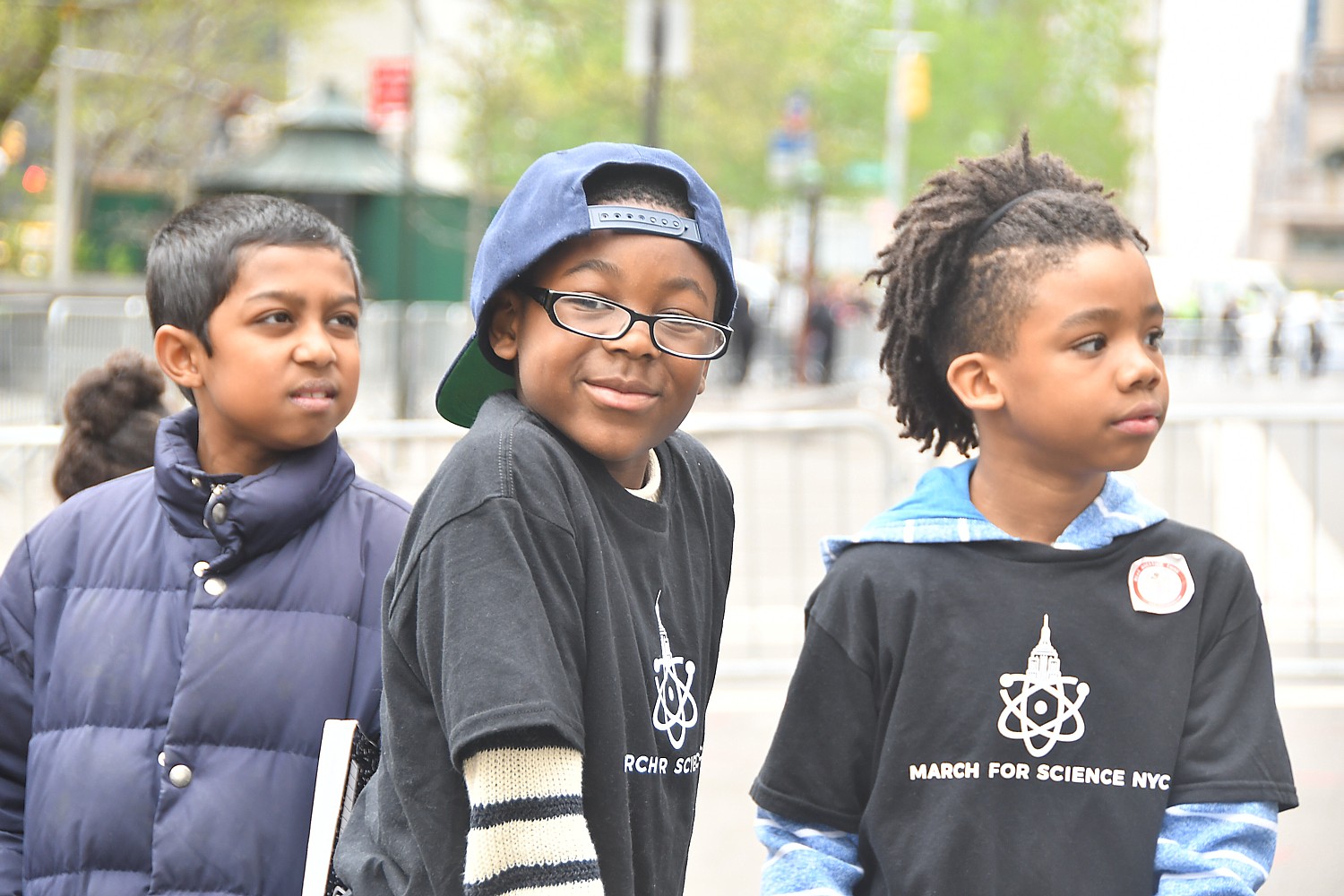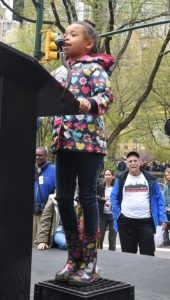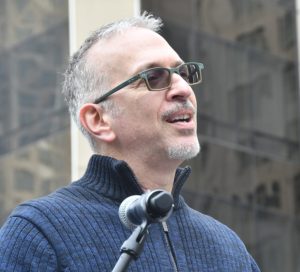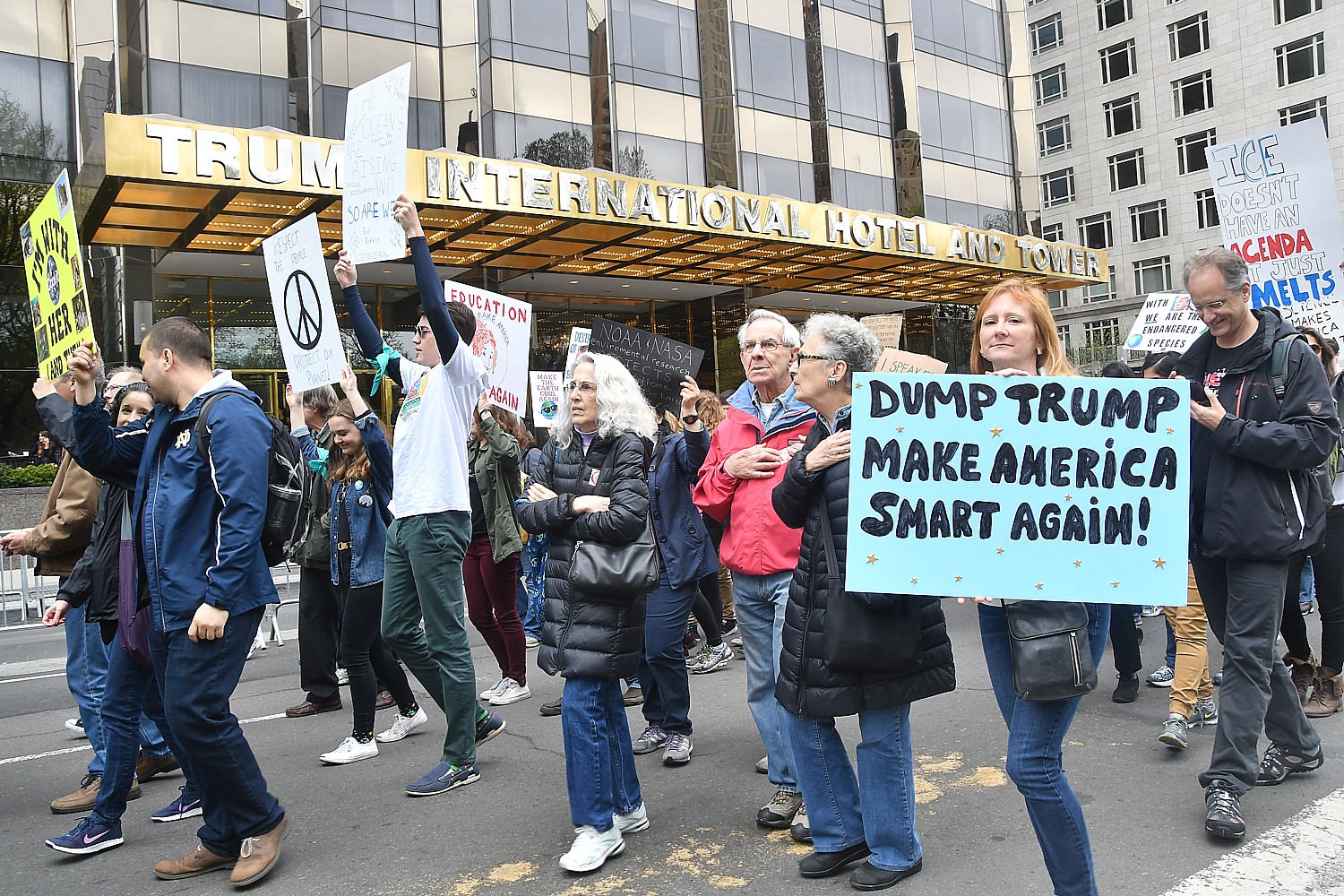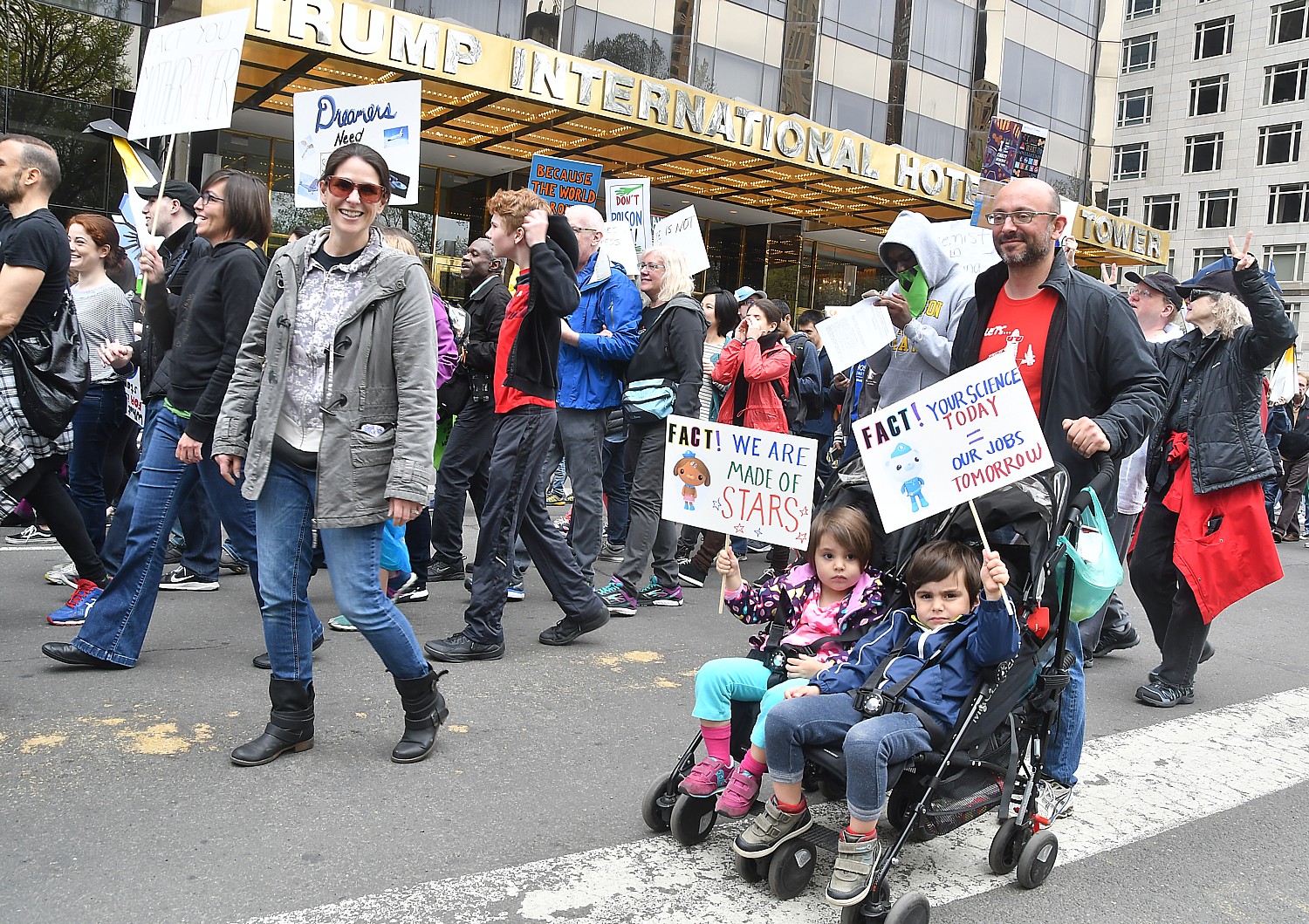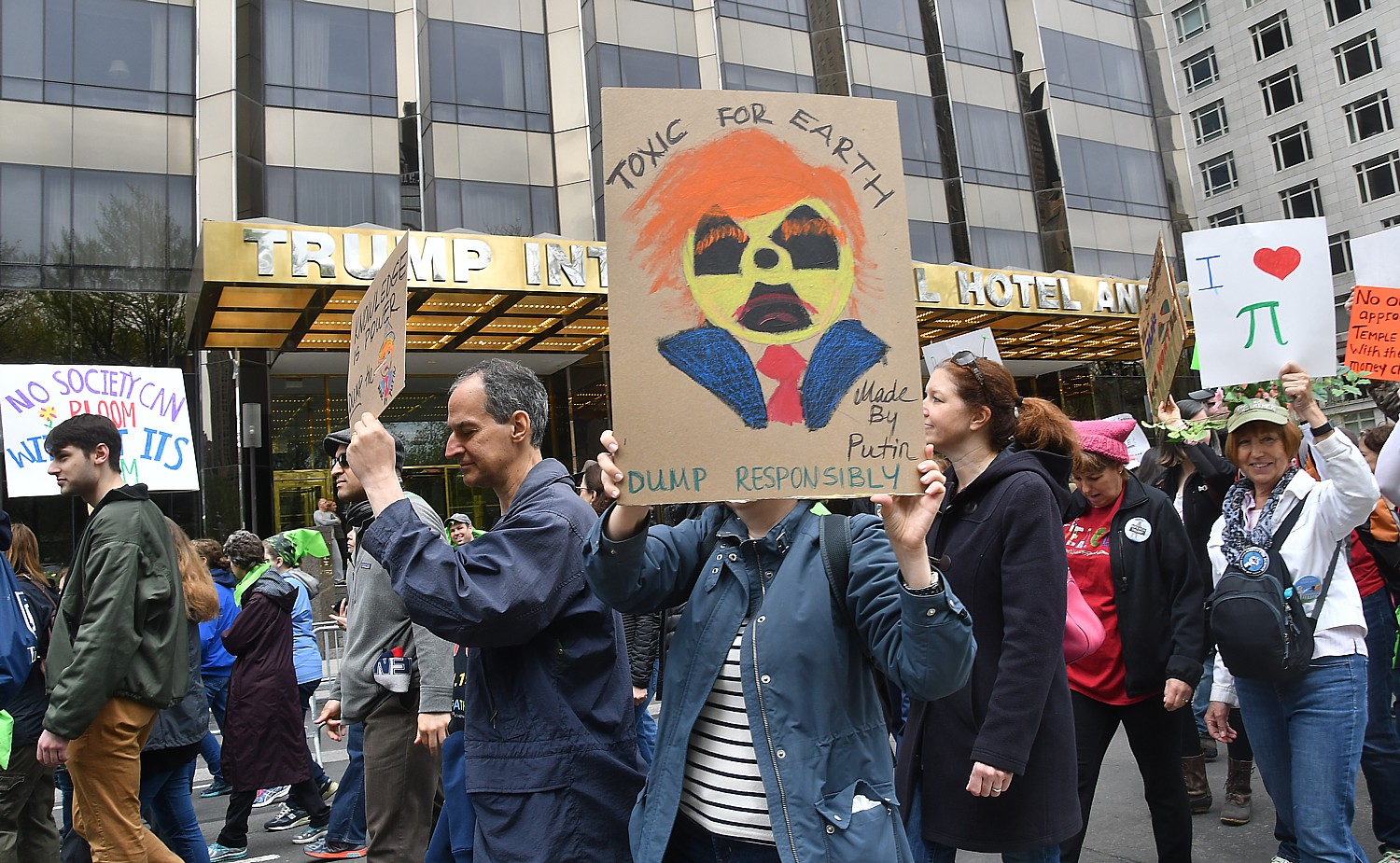President Biden held a historic Leaders Summit on Climate, in which he announced higher targets for the US to achieve, and underscored America’s commitment to leading a clean energy revolution, linking climate action to economic growth. The White House issued this summary:

On Day One, President Biden fulfilled his commitment to rejoin the Paris Agreement. Days later, he took executive actions to ensure we tackle the climate crisis at home and abroad – all while creating jobs and strengthening our economy. This week, he held a historic summit with 40 world leaders to show that America is back.
Over the course of two days and eight sessions, President Biden convened heads of state and government, as well as leaders and representatives from international organizations, businesses, subnational governments, and indigenous communities to rally the world in tackling the climate crisis, demonstrate the economic opportunities of the future, and affirm the need for unprecedented global cooperation and ambition to meet the moment.
On the first day of the summit, President Biden upped the ante. He announced the United States will target reducing emissions by 50-52 percent by 2030 compared to 2005 levels. He underscored America’s commitment to leading a clean energy revolution and creating good-paying, union jobs – noting that the countries that take decisive action now will reap the economic benefits of the future.
In the United States, the Biden-Harris Administration has mobilized a whole-of-government approach to unleash economic opportunities, create good jobs, and advance environmental justice. From the national to the local level and across all agencies, the federal government is not only working to help those hit hardest by climate impacts, but also creating a more resilient, equitable, and prosperous future.
While the Biden-Harris Administration has committed itself to addressing the climate crisis, countries across the globe must also step up. Given that more than 85 percent of emissions come from beyond U.S. borders, domestic action must go hand in hand with international leadership. All countries – and particularly the major economies – must do more to bend the curve on global emissions so as to keep a 1.5 degree C limit on global average temperature rise within reach. President Biden’s Leaders Summit helped ensure the international community is working together to tackle the climate crisis and support the most vulnerable. Together with the new United States 2030 target along with those announced in the run-up to and at the summit, more than half of the world’s economy is now committed to the pace of action we need to limit warming to 1.5 degree C. And this coalition is growing.
President Biden convened the U.S.-led Major Economies Forum (MEF) on Energy and Climate, a group the United States first convened during the George W. Bush Administration. Together, the 17 MEF economies are responsible for approximately 80 percent of global greenhouse gas emissions and global GDP. At the Summit, alongside the United States, the other MEF participants committed to take the necessary steps to set the world up for success in this decisive decade. The heads of state and leaders of the MEF participants were also joined by the leaders of countries that are especially vulnerable to climate impacts, as well as countries charting innovative pathways to a net-zero economy. Business leaders, innovators, local officials, and indigenous and youth representatives participated in the summit, sharing their insights and planned contributions to help tackle the climate crisis.
For our part, the United States is leading the way with a range of bold new commitments across the federal government that demonstrate its leadership, create jobs, rally the rest of the world to step up, mobilize finance, spur transformational innovations, conserve nature, build resilience, strengthen adaptation and drive economic growth for communities. U.S. commitments include:
Enhancing climate ambition and enabling the transformations required to reach net-zero emissions by 2050. President Biden is galvanizing efforts by the world’s major economies to reduce emissions during this critical period. From reducing short-lived climate pollutants and supporting the most vulnerable to investing in nature-based solutions, these transformational changes are critical to keep a 1.5 degree C limit on global average temperature rise within reach. Just as importantly, they will create new, good-paying jobs today to drive tomorrow’s economy.
The Biden-Harris Administration’s whole-of-government approach is ensuring that climate considerations are incorporated across U.S. engagements both at home and abroad. Some of the initiatives that were announced today include:
- Launching a Global Climate Ambition Initiative. The U.S. government will support developing countries in establishing net-zero strategies, implementing their nationally determined contributions and national adaptation strategies, and reporting on their progress under the Paris Agreement. The Department of State and the U.S. Agency for International Development (USAID), working with other agencies, will coordinate U.S. government efforts to support countries around the world to enhance and meet their climate goals in ways that further their national development priorities. We will engage strategically with governments, the private sector, civil society, and communities to support transformational policies and programs, build human and institutional capacity, and create momentum toward a zero-emissions, climate-resilient future.
- Setting ambitious benchmarks for climate investments at DFC. The U.S. International Development Finance Corporation (DFC) is committing to achieve a net zero investment portfolio by 2040, the earliest target of any G7 or G20 development finance institution (DFI), and to make at least one-third of all its new investments have a climate nexus beginning in FY 2023. DFC will make climate issues central to its development strategy for the first time and bring all of its tools to bear to ensure a just transition that supports sustainable economic growth in developing countries. Working with the Rockefeller Foundation, DFC will support distributed renewable energy and other innovative climate investments to benefit millions worldwide. It has released a rolling call for proposals for climate investment funds, is bringing onboard its first Chief Climate Officer, and has established a $50 million climate technical assistance facility. These pioneering goals are unique among its peer institutions, and DFC will collaborate with other DFIs and encourage them to raise their own ambitions.
- Committing to climate investments at MCC. The Millennium Challenge Corporation (MCC) will expand and deepen work to address climate change challenges across its investment portfolio and business operations—investing in climate-smart development and sustainable infrastructure. Over the next five years, MCC commits that more than 50 percent of its program funding will go to climate-related investments. MCC will promote low-carbon economic development, help countries transition away from fossil fuels, and maintain a coal-free policy across its portfolio of grants.
- Launching a Greening Government Initiative. The Greening Government Initiative launch marks the first international convening on greening national plans for sustainable government operations. Co-chaired by Canada and the United States, GGI countries seek to lead by example in developing and implementing climate action plans that increase the resilience of and mitigate emissions from national government operations and real property. Through coordinating our national priorities and collaborating on common goals, we hope to foster and inspire a global “race to the top” of government efforts toward achievement of the goals of the Paris Agreement. The United States and Canada will lead this initiative through cooperation in the management of national government procurement and real property, helping both nations achieve their individual goals of a net-zero emissions economy, 100 percent clean electricity usage, and a zero-emissions vehicle fleet.
Mobilizing financing to drive the net-zero transition and adapt to climate change. Finance plays a vital role in accelerating the transition to a clean energy economy and building a climate-resilient future. Current financial flows are inadequate for addressing the scale of the climate crisis. Through President Biden’s international climate finance plan, the U.S. government will make strategic use of multilateral and bilateral channels and institutions to assist developing countries in implementing ambitious emissions reduction measures, protect critical ecosystems, build resilience against the impacts of climate change, and promote the flow of capital toward climate-aligned investments and away from high-carbon investments. To more effectively mobilize public and private finance to address the climate crisis, the United States announced it is:
- Scaling up international financing to address climate needs. The United States intends to double by 2024 our annual public climate finance to developing countries relative to the average level during the second half of the Obama-Biden Administration (FY 2013-2016). As part of this goal, the United States intends to triple its adaptation finance by 2024. The Biden Administration will work closely with Congress to meet these goals.
- Issuing the first U.S. International Climate Finance Plan. The United States is publishing its first-ever U.S. international climate finance plan, which lays out how federal agencies and departments responsible for international climate finance will work together to deliver that finance more efficiently and with greater impact.
- Launching an international dialogue on decreasing fiscal climate risk through national budgets. Earlier this month, the United States announced a more than $14 billion increase in the President’s Budget over FY 2021 enacted levels across the entire government to tackle the climate crisis, the largest in history. The United States is launching an international dialogue on aligning the budget with climate risks and opportunities. The dialogue will build both on U.S. leadership in climate budgeting and assessing climate risk and on the pioneering work already being done in multilateral fora. The United States will engage with participating countries through bilateral and multilateral channels to collaborate on cost-effective strategies across participating countries to increase climate investments while creating good-paying jobs. The dialogue will also explore how to improve climate risk analysis in national operations that could help countries optimize and expand investments in adaptation and reduce national exposure to the impacts of climate change.
Transforming energy systems. The potential of solar energy, wind power, and electricity storage technologies has improved dramatically over the past few years. But we need to go further and faster. To support accelerated action, new commitments include:
- Establishing a Net-Zero Producers Forum. In support of efforts to achieve net-zero emissions by midcentury, the United States, together with the energy ministries from Canada, Norway, Qatar, and Saudi Arabia, representing 40 percent of global oil and gas production, established a cooperative forum that will create pragmatic net-zero strategies, including methane abatement, advancing the circular carbon economy approach, development and deployment of clean-energy and carbon capture and storage technologies, diversification from reliance on hydrocarbon revenues, and other measures in line with each country’s national circumstances.
- Establishing a U.S.-India Climate and Clean Energy Agenda 2030 Partnership. The United States is working with allies and partners around the world to set ambitious 2030 targets for climate action and clean energy innovation and deployment. The U.S.-India Climate and Clean Energy Agenda 2030 Partnership will elevate ambitious climate action as a core theme of U.S.-India collaboration and support the achievement of India’s ambitious targets, including reaching 450 GW of renewable energy by 2030. The Partnership will aim to mobilize finance and speed clean energy deployment; demonstrate and scale innovative clean technologies needed to reduce greenhouse gas emissions across sectors including industry, transportation, power, and buildings; and build capacity to measure, manage, and adapt to the risks of climate-related impacts.
- Supporting ambitious renewable energy goals and pathways in Latin America and the Caribbean. The Department of State announced scaled-up technical assistance to countries participating in the Renewable Energy for Latin America and the Caribbean (RELAC) initiative, a regional effort led by Colombia, Chile, and Costa Rica to increase renewable energy capacity to at least 70 percent by 2030. Expanded U.S. support through the Low Emission Development Strategies Global Partnership and the U.S. National Renewable Energy Laboratory will center on peer learning and training on policies and technical measures for achieving high levels of renewable energy grid integration. U.S. support to enable current RELAC countries and motivate additional countries to join RELAC will be delivered in cooperation with the InterAmerican Development Bank, the Latin American Energy Organization (OLADE), and the Global Power System Transformation Consortium.
- Supporting clean energy mineral supply chains. The Energy Resource Governance Initiative (ERGI) is a multinational effort founded by Australia, Botswana, Canada, Peru, and the United States to help build sustainable supply chains and promote sound sector governance for the minerals vital to technologies powering the energy transition, such as solar panels, electric vehicles, and battery storage. The United States has committed more than $10.5 million in bilateral technical assistance in support of ERGI principles in more than ten countries around the world. The Initiative’s focus is now expanding to include greening mining operations, as well as re-use and recycling of key minerals and metals. The United States will also join the Intergovernmental Forum on Mining in support of international cooperation on the minerals and metals that make the renewable energy transition possible.
Revitalizing the transport sector. The transformation of the transport sector offers some of the biggest opportunities for deep emissions cuts, new jobs, and healthier cities. To jump-start this revolution, the United States is committing to:
- Sparking the zero-emission transportation revolution – at home and abroad. The Department of Transportation (DOT) is taking a comprehensive approach to addressing the climate crisis and expanding ways for all modes of transportation to transition to zero emissions. This includes funding for lower-emission buses, expanding access to electric vehicle (EV) charging stations, using our public rights of way in climate-supportive ways, and working with partners around the world bilaterally, regionally, and in multilateral fora to help catalyze the transition to zero-emitting transportation as swiftly as possible.
- Joining the Zero Emission Vehicle Transition Council. The United States will join a coalition of governments representing more than half of new vehicle sales globally that is dedicated to accelerating the global transition to zero emission vehicles.
- Reducing emissions from international shipping. The international shipping sector contributes approximately three percent of global greenhouse gas (GHG) emissions, and the sector’s emissions are only projected to increase. In support of the global effort to keep within reach a 1.5 degree C limit on global average temperature increase, and in support of global efforts to achieve net-zero GHG emissions no later than 2050, the United States is committing to work with countries in the International Maritime Organization (IMO) to adopt a goal of achieving zero emissions from international shipping by 2050 and to adopt ambitious measures that will place the sector on a pathway to achieve this goal.
- Reducing emissions from international aviation. The United States is committed to working with other countries on a vision toward reducing the aviation sector’s emissions in a manner consistent with the goal of net-zero emissions for our economy by 2050, as well as on robust standards that integrate climate protection and safety. The United States intends to advance the development and deployment of high integrity sustainable aviation fuels and other clean technologies that meet rigorous international standards, building on existing partnerships, such as through ASCENT– the Aviation Sustainability Center – and pursue policies to increase the supply and demand of sustainable aviation fuels. In the International Civil Aviation Organization, we will engage in processes to advance a new long-term aspirational goal in line with our vision for reducing greenhouse gas emissions in the aviation sector, and continue to participate in the Carbon Offsetting and Reduction Scheme for International Aviation (CORSIA).
Building workforces for the future and ensuring U.S. competitiveness. Climate action is an opportunity to spur job creation while enabling all communities and workers to benefit from the clean energy economy. To create opportunities for American-made solutions to tackle the climate crisis abroad, the United States is announcing new commitments to:
- Launching a Global Partnership for Climate-Smart Infrastructure. The U.S. Trade and Development Agency (USTDA) will launch the Global Partnership to connect U.S. industry to major energy and transportation infrastructure investments in emerging markets. This initiative will support the rebuilding of the U.S. middle class through the export of U.S.-manufactured goods and services, while enhancing economic recovery through climate-smart infrastructure development for our partners and allies globally. The Global Climate-Smart Infrastructure Partnership will leverage USTDA’s project preparation and partnership-building tools to support the use of U.S. technologies and services in overseas climate-smart infrastructure projects.
- Creating the EXIM Chairman’s Council on Climate. The U.S. Export-Import Bank (EXIM) will create a Chairman’s Council on Climate, a sub-committee of EXIM’s Advisory Committee dedicated to advising EXIM on how to better support U.S. exporters in clean energy, foster the transition to a low-carbon economy, and create clean U.S. jobs at home. Membership will be comprised of a wide range of representatives which could include, for example, members of U.S. industry, the financial sector, trade associations, labor, academia, think tanks, and civil society organizations. EXIM will open applications to the public in summer 2021.
- Supporting workers and communities in the shift to a global clean energy future. As the United States moves towards a clean energy economy, it is committed to helping energy workers and communities address the challenges and equitably capitalize on the opportunities associated with this transition. The U.S. Secretary of Energy convened the energy ministers of Canada, India, and the European Commission, along with representatives from the labor and advocacy communities, to begin a discussion on global efforts to address this critical issue. To continue the dialogue, the Department of Energy announced that it is joining Canada, the European Union, and Chile to launch the Empowering People initiative at the Clean Energy Ministerial this June.
Promoting innovation to bring clean technologies to scale. Innovation will spur the technology and transformations necessary to reduce emissions and adapt to climate change at scale, while also creating enormous new economic opportunities to build the industries of the future. To build the future we want, the United States announced:
- Clean energy innovation and manufacturing. The United States commits to accelerating the technology progress critical to advancing sustainable development and achieving a net-zero global economy. The effort will spur good-paying American jobs focused on developing, manufacturing, and exporting cost-effective products that support sustainable development across the world. The U.S. Department of Energy will define a series of performance targets and coherently leverage the diverse expertise and talent at American universities, businesses, and national laboratories to accelerate research and development in top linchpin technologies, beginning with: hydrogen, carbon capture, industrial fuels, and energy storage. The targets and roadmaps will look beyond incremental advances and aim, instead, at the game-changing breakthroughs that will secure American leadership in the manufacture of net-zero carbon technologies and support sustainable development around the world. In the coming weeks, the U.S. Department of Energy will convene experts from American academia, business, and the national laboratories to announce the first of these moonshot-style ventures and catalyze the game-changing breakthroughs that will grow new businesses and new jobs domestically and export these net-zero carbon technologies all around the world.
- Reinvigorating leadership and participation in Mission Innovation. The Biden-Harris Administration has announced plans to quadruple clean energy innovation funding over the next four years, and the United States is playing a key role in advancing international collaboration on innovation and supporting the launch of Mission Innovation 2.0, including:
- Launching, and leading together with international partners, a major Mission Innovation international technology mission on carbon dioxide removal at COP26.
- Joining Mission Innovation’s hydrogen mission and co-leading, with Denmark, a mission to reducing greenhouse gas emissions in international shipping, both slated to launch at the June 2021 Mission Innovation ministerial.
- Planning to host the co-located 2022 Mission Innovation and Clean Energy Ministerial meetings.
- Leading the Agriculture Innovation Mission for Climate. The United States will lead the creation of the Agriculture Innovation Mission for Climate along with the United Arab Emirates and in coordination with several other partner countries. The goal of this initiative is to accelerate innovation and research and development in agricultural and food systems in order to spur low-carbon growth and enhance food security. The initiative will be advanced at the UN Food Systems Summit in September 2021 and launched at COP26 in November 2021 through the UK’s COP26 Campaign for Nature.
- Joining the Leadership Group for Industry Transition (LeadIT). The United States will join the Leadership Group for Industry Transition (LeadIT), along with co-founders Sweden and India. LeadIT convenes countries and companies committed to speeding innovation in technologies to reduce greenhouse gas emissions in energy-intensive sectors and speed progress to net-zero emissions by 2050.
- Launching a Global Power System Transformation (G-PST) Consortium. To speed progress toward a carbon-free power system by 2035 at home and around the world, the United States, along with the United Kingdom, joined leading power system operators, world-class research institutes, and private institutions from countries at the forefront of power system transitions to launch this new consortium, which couples cutting-edge research with knowledge diffusion to share best-in-class operational, engineering, and workforce development solutions with power system operators around the world. The G-PST Consortium aims to help system operators to permanently change their emissions trajectories while simultaneously improving grid reliability, resiliency, and security and supporting economic growth.
- Launching the FIRST Program to support the use of small modular reactors. In support of the Administration’s commitment to increasing reliable energy access worldwide while meeting carbon reduction targets, the Department of State is launching the Foundational Infrastructure for the Responsible Use of Small Modular Reactor Technology (FIRST) Program with an initial $5.3 million investment. FIRST provides capacity-building support to enable partner countries to benefit from advanced nuclear technologies and meet their clean energy goals under the highest standards of nuclear security, safety, and nonproliferation.
Providing urgent support for vulnerable countries to adapt and build resilience to the climate crisis. The climate crisis is already posing challenges to communities at home and around the world. Millions of Americans feel the effects of climate change each year when agriculture fields are flooded, wildfires destroy neighborhoods, and storms knock out power. Communities of color and low-income communities around the country are particularly vulnerable to climate change. Abroad, many vulnerable countries already are facing catastrophic climate impacts. They must build their resilience to the climate crisis now. To strengthen our capacity to help people, reduce future risks and improve resilience, the United States is announcing it is:
- Supporting environmental justice and climate resilience. EPA will fund $1 million in grants/cooperative agreements through the Commission on Environmental Cooperation (CEC) to work with underserved and vulnerable communities, including indigenous communities, in Canada, Mexico, and the United States to prepare them for climate-related impacts. This initiative will provide funding directly to community-based organizations to help them develop community-driven solutions to the challenges of climate change. These projects could involve vulnerable communities converting workers to clean jobs, addressing extreme weather impacts, transitioning to clean energy and/or transportation, or utilizing traditional ecological knowledge. Following a competitive process, the most innovative and impactful projects will be approved by consensus by the environment ministers of the three countries. The United States currently chairs the CEC Council.
- Partnering with islands to lead on climate and energy resilience. The United States is committed to partnering with small islands in their efforts to combat the climate crisis in ways that reflect their unique cultures and development challenges by building resilience in the face of a changing climate. Working together, the Department of State, the National Oceanic and Atmospheric Administration (NOAA), the Department of Energy (DOE), and the U.S. Agency for International Development (USAID) will launch a new partnership to advance the inclusion of locally generated climate information, knowledge, data and decision support tools in ongoing and emerging sustainability and resilience endeavors in island regions. The Department of State will support a unique island-led partnership, the Local2030 Island Network, which links U.S. island jurisdictions with those around the world in developing common solutions in a shared cultural context. NOAA will work with this network and other partners to enhance the capacity of island nations to integrate climate data and information, and it will apply effective coastal and marine resource management strategies to support sustainable development. DOE will launch the Energy Transitions Initiative – Global, which will focus on transforming the energy systems of and increasing resilience for islands and remote communities, starting in the Caribbean and Asia-Pacific and growing to include other vulnerable communities. USAID, through the Pacific Climate Ready project and the Caribbean Energy and Resilience initiatives, will support small island developing states to strengthen their systems and capacities to become more climate resilient in ways that are country-driven, coordinated, inclusive, and equitable.
- Reducing black carbon by investing in clean cookstoves. Household energy emissions have a significant impact on the climate, environment, human health, gender, and livelihoods. In addition, the reduction of short-lived climate pollutants, such as methane and black carbon, can in the short term contribute significantly to keeping a 1.5 degree C limit on global average temperature rise within reach. Given the urgent need for tangible, ambitious, and global action, the U.S. government is announcing that it is resuming and strengthening its commitment to the United Nations Foundation’s Clean Cooking Alliance. The U.S. Environmental Protection Agency (EPA) will work with the Clean Cooking Alliance, other governments, and partners to reduce emissions from home cooking and heating that contribute to climate change and also directly affect the health and livelihoods of almost 40 percent of the world’s population.
- Mitigating black carbon health impacts in Indigenous Arctic communities. EPA, working through our partners in the Arctic Council, is pleased to announce the Black Carbon Health in Indigenous Arctic Communities project to be implemented by the Aleut International Association. Indigenous Arctic communities need tools to understand their exposure to black carbon emissions, to help them identify significant local sources, and to share best practices for preventing and mitigating the health impacts of air pollution and climate. The project will help these communities measure, analyze, and addresses black carbon exposure and strengthen their capacity to develop and promote black carbon mitigation strategies.
Implementing nature-based solutions. Nature is a critical part of reaching net-zero emissions and enhancing community resilience. The world’s ocean and forests are critical carbon sinks and a source of life and livelihoods. Recognizing nature’s vital role, the United States is announcing new resources and support for:
- Investing in tropical forests to drive towards a net-zero world. Halting deforestation globally, and restoring forests and other ecosystems, is critical to reaching a net-zero emissions world by 2050. The United States is joining together with other governments and private sector companies today to announce the Lowering Emissions by Accelerating Forest finance (LEAF) Coalition. The LEAF Coalition expects to mobilize at least $1 billion this year to incentivize tropical and subtropical countries in reducing emissions from forests by paying for verified emissions reductions that meet a high environmental and social standard. This is a crucial component to raising global climate ambition and to halting and reversing deforestation by 2030.
- Funding nature-based approaches to coastal community and ecosystem resilience. The National Oceanic and Atmospheric Administration (NOAA), the National Fish and Wildlife Foundation, and additional governmental and private partners will provide $34 million for nature-based approaches through the National Coastal Resilience Fund. These projects will advance restoration or enhancement of natural features, such as coastal wetlands, dunes, and coral reefs, to protect coastal communities and infrastructure from flooding, while also improving habitat for fish and wildlife. NOAA and the National Fish and Wildlife Foundation commit to advancing the science and practice of implementing nature-based approaches to coastal resilience with international communities of practice by participating in exchanges and dialogues to share the lessons and innovations learned from these projects. The U.S. Fish and Wildlife Service and its partners will also provide $78 million in grants to help conserve or restore nearly 500,000 acres of wetlands in Canada, Mexico, and the United States through the Migratory Bird Conservation Commission.
- Promoting resilience in the Southern Ocean. The United States is supporting the three marine protected area proposals in the Southern Ocean before the Commission for the Conservation of Antarctic Marine Living Resources (CCAMLR). These unique areas are vulnerable to the impacts of climate change, and they must be protected. The United States is calling on all CCAMLR members to adopt these marine protected areas at this year’s meeting.
Promoting safety and security at home and abroad. Climate change has been identified by the Department of Defense (DoD) as a critical national security threat and threat multiplier. As a result, DoD has undertaken assessments of the impacts that the climate crisis has on American military instillations. Today the United States is announcing:
- Conducting climate exposure assessments on all U.S. installations. The DoD is announcing a plan to complete climate exposure assessments on all major U.S. installations within 12 months and all major installations outside the continental U.S. within 24 months using the Defense Climate Assessment Tool (DCAT). The DCAT helps identify the climate hazards to which DoD installations are most exposed, which is the first step in addressing the potential physical harm, security impacts, and degradation in readiness resulting from global climate change.
- Supporting assessments in partner countries around the world. The DoD is also announcing its commitment to share the DCAT with a number of attending allied partners and militaries.
Supporting action at every level. Fully addressing the climate crisis requires an all-of-society response. President Biden is committed to working with sub-national actors, business, civil society, indigenous communities, and youth to facilitate collective ambitious action that yields lasting results.
- Advancing subnational and non-state engagement abroad. The United States will step up engagement with subnational governments and non-state actors around the world to accelerate climate action. It will also partner with U.S. cities, states, territories, and Tribes in the context of its diplomatic outreach globally, supporting their engagement at UN Climate Change summits and working with other countries to elevate similar efforts.
- Catalyzing subnational action and participation in COP26. The United States endorses Race To Zero, a global campaign for net-zero targets from businesses, cities, and regions, and will work to seek additional U.S participants. The United States also announced an intent to commission analysis of the emission reduction potential from subnational leadership worldwide and to work with national and subnational partners globally to achieve this potential.
Today’s announcements are additional steps in the Biden-Harris Administration’s work to advance an unprecedented whole-of-government response to climate change while creating good-paying, union jobs and advancing environmental justice. On his first day in office, President Biden fulfilled his promise to rejoin the Paris Agreement, and one week later he signed an Executive Order on Tackling the Climate Crisis at Home and Abroad. As part of this Order, the President charged federal agencies to take a comprehensive approach to addressing the climate crisis. From reducing emissions to advancing a just transition, the Biden-Harris Administration is committed to working hand in hand with international leaders, civil society, businesses, and communities and getting countries around the world to step up and meet this global challenge.




